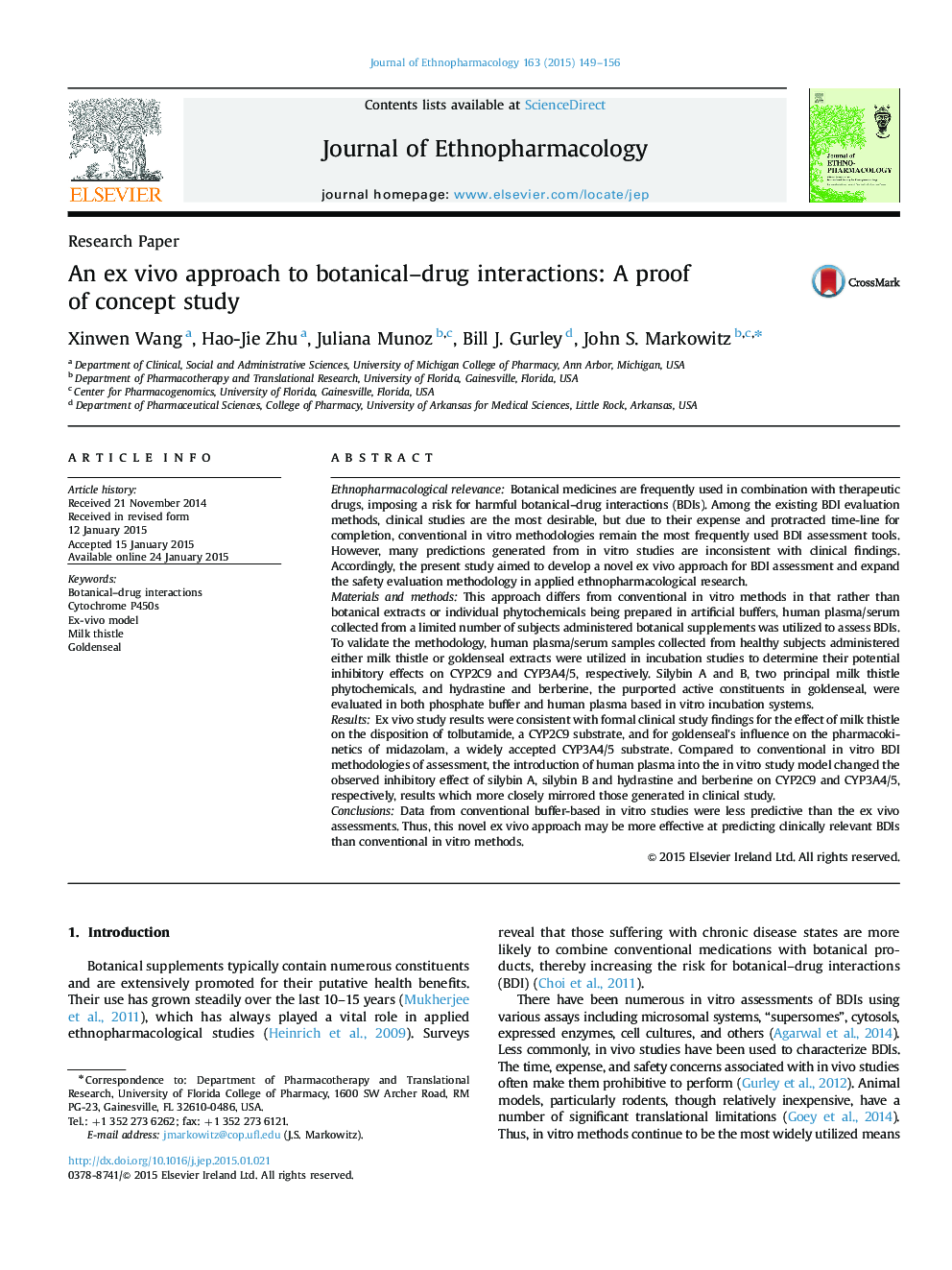| کد مقاله | کد نشریه | سال انتشار | مقاله انگلیسی | نسخه تمام متن |
|---|---|---|---|---|
| 2545028 | 1560399 | 2015 | 8 صفحه PDF | دانلود رایگان |

Ethnopharmacological relevanceBotanical medicines are frequently used in combination with therapeutic drugs, imposing a risk for harmful botanical–drug interactions (BDIs). Among the existing BDI evaluation methods, clinical studies are the most desirable, but due to their expense and protracted time-line for completion, conventional in vitro methodologies remain the most frequently used BDI assessment tools. However, many predictions generated from in vitro studies are inconsistent with clinical findings. Accordingly, the present study aimed to develop a novel ex vivo approach for BDI assessment and expand the safety evaluation methodology in applied ethnopharmacological research.Materials and methodsThis approach differs from conventional in vitro methods in that rather than botanical extracts or individual phytochemicals being prepared in artificial buffers, human plasma/serum collected from a limited number of subjects administered botanical supplements was utilized to assess BDIs. To validate the methodology, human plasma/serum samples collected from healthy subjects administered either milk thistle or goldenseal extracts were utilized in incubation studies to determine their potential inhibitory effects on CYP2C9 and CYP3A4/5, respectively. Silybin A and B, two principal milk thistle phytochemicals, and hydrastine and berberine, the purported active constituents in goldenseal, were evaluated in both phosphate buffer and human plasma based in vitro incubation systems.ResultsEx vivo study results were consistent with formal clinical study findings for the effect of milk thistle on the disposition of tolbutamide, a CYP2C9 substrate, and for goldenseal׳s influence on the pharmacokinetics of midazolam, a widely accepted CYP3A4/5 substrate. Compared to conventional in vitro BDI methodologies of assessment, the introduction of human plasma into the in vitro study model changed the observed inhibitory effect of silybin A, silybin B and hydrastine and berberine on CYP2C9 and CYP3A4/5, respectively, results which more closely mirrored those generated in clinical study.ConclusionsData from conventional buffer-based in vitro studies were less predictive than the ex vivo assessments. Thus, this novel ex vivo approach may be more effective at predicting clinically relevant BDIs than conventional in vitro methods.
Figure optionsDownload high-quality image (164 K)Download as PowerPoint slide
Journal: Journal of Ethnopharmacology - Volume 163, 2 April 2015, Pages 149–156